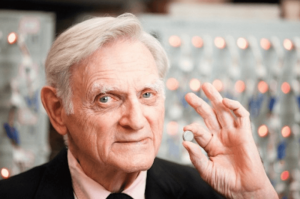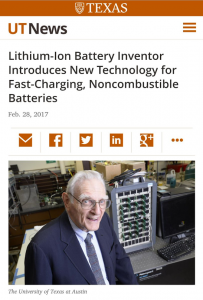

John Goodenough, a professor at the University of Texas, is widely credited as the inventor of the lithium-ion battery. Oddly enough, he may now also be the man responsible for its replacement – a whopping 37 years later, at just 94 years young. In the nearly four decades that have passed since the battery’s inception, he has never stopped working to make it better. Despite its widespread popularity and use, he still never felt it was "good enough. So along with Maria Helena Braga, senior research fellow at the Cockrell School, and their team, a low-cost solid state battery eventually came to fruition; one which was far safer than its lithium-ion predecessor. Not only is the new battery technology cheaper to make and safer to use, but it also stores thrice as much energy and takes mere minutes to charge, rather than several hours. Plus, it’s equipped to sustain a far greater number of charge and discharge cycles than the typical lithium-ion battery.


Only time will tell if the idea is deemed to be both practical and scalable. When the lithium-ion battery was first invented, it took nearly a decade to enter the mass production phase of its life cycle. But at least there is hope on the horizon for a better-powered future, as Goodenough and his team work with battery makers to test the invention in real-world devices.

 Laptop & Tablet Parts
Laptop & Tablet Parts




















